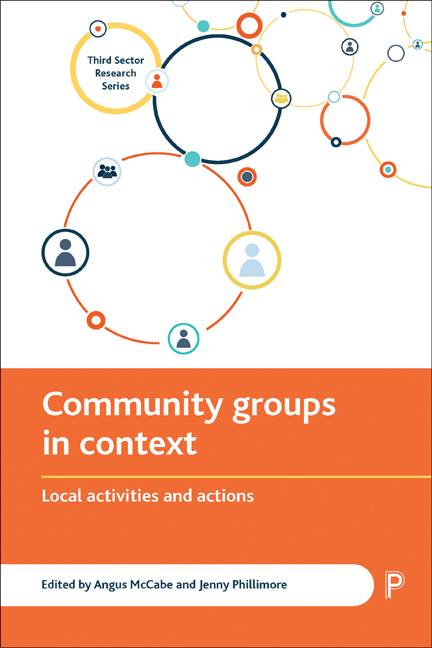Book contents
- Frontmatter
- Contents
- List of tables and figures
- Foreword
- Series editor’s foreword
- Acknowledgements
- Notes on contributors
- Introduction Why get below the radar? The importance of understanding community groups and activities
- Part One Scoping and mapping community actions and activities
- Part Two Community groups and activities in context
- Part Three Under-explored radars
- Part Four Thinking about voice, learning and emotion below the radar
- Index
one - Below the radar? Community groups and activities in context
Published online by Cambridge University Press: 05 April 2022
- Frontmatter
- Contents
- List of tables and figures
- Foreword
- Series editor’s foreword
- Acknowledgements
- Notes on contributors
- Introduction Why get below the radar? The importance of understanding community groups and activities
- Part One Scoping and mapping community actions and activities
- Part Two Community groups and activities in context
- Part Three Under-explored radars
- Part Four Thinking about voice, learning and emotion below the radar
- Index
Summary
Chapter aims
This chapter addresses:
• definitions of ‘below the radar’ community groups and activities;
• the size and scope of informal and semi-formal community activity;
• the contested nature of concepts of below the radar community groups and activities.
Background
Interest in small-scale, below the radar community groups and activities has grown in recent times and cuts across a wide range of policy concerns: from engaging black and minority ethnic (BME) community organisations in community cohesion agendas and combating violent extremism, through to commissioning public services at the local level, supporting grassroots community economic development in excluded neighbourhoods and involving community-based organisations in modernising local governance, community safety, asset management, health and wellbeing.
Under New Labour administrations, it was possible to identify two key strands to policy relating to small-scale community groups: first, the expectation that such groups, along with the wider voluntary sector, would take on a greater responsibility for the delivery of public services (Home Office, 2004) or the management of previously public sector assets (Quirk, 2007); and second, an assumption that they had a role in promoting active citizenship, addressing ‘democratic deficit’ and (re)engaging citizens in democratic processes (Mayo et al, 2013).
These developments coincided with a series of investments in small organisations or, indeed, individuals to develop their capacity to engage in policy and service delivery, including, for example, the Active Learning for Active Citizenship programme, Community Empowerment Networks and, subsequently, Regional Empowerment Partnerships. In this context:
A healthy community sector is critical for the sustainability of local communities. It is not an end in itself. It helps deliver social capital, social cohesion and democratic participation. Better public investment in the [voluntary and community] sector will result in a better quality of life for local people and local communities, partly through their own direct activities and partly through their interaction with public services. (CLG, 2007, p 1)
Under the UK coalition and subsequent Conservative governments, this interest was sustained in the short-lived Big Society initiative and, subsequently, the Localism Act of 2011 – albeit with both demonstrating a changed language (from community engagement to social action, for example) and offering substantially less resource. Further, the emphasis shifted: citizens, and groups of citizens, were to be managers of, and volunteers in, what had been public services (such as libraries) rather than influencing the configuration of those services.
- Type
- Chapter
- Information
- Community Groups in ContextLocal Activities and Actions, pp. 7 - 26Publisher: Bristol University PressPrint publication year: 2017

